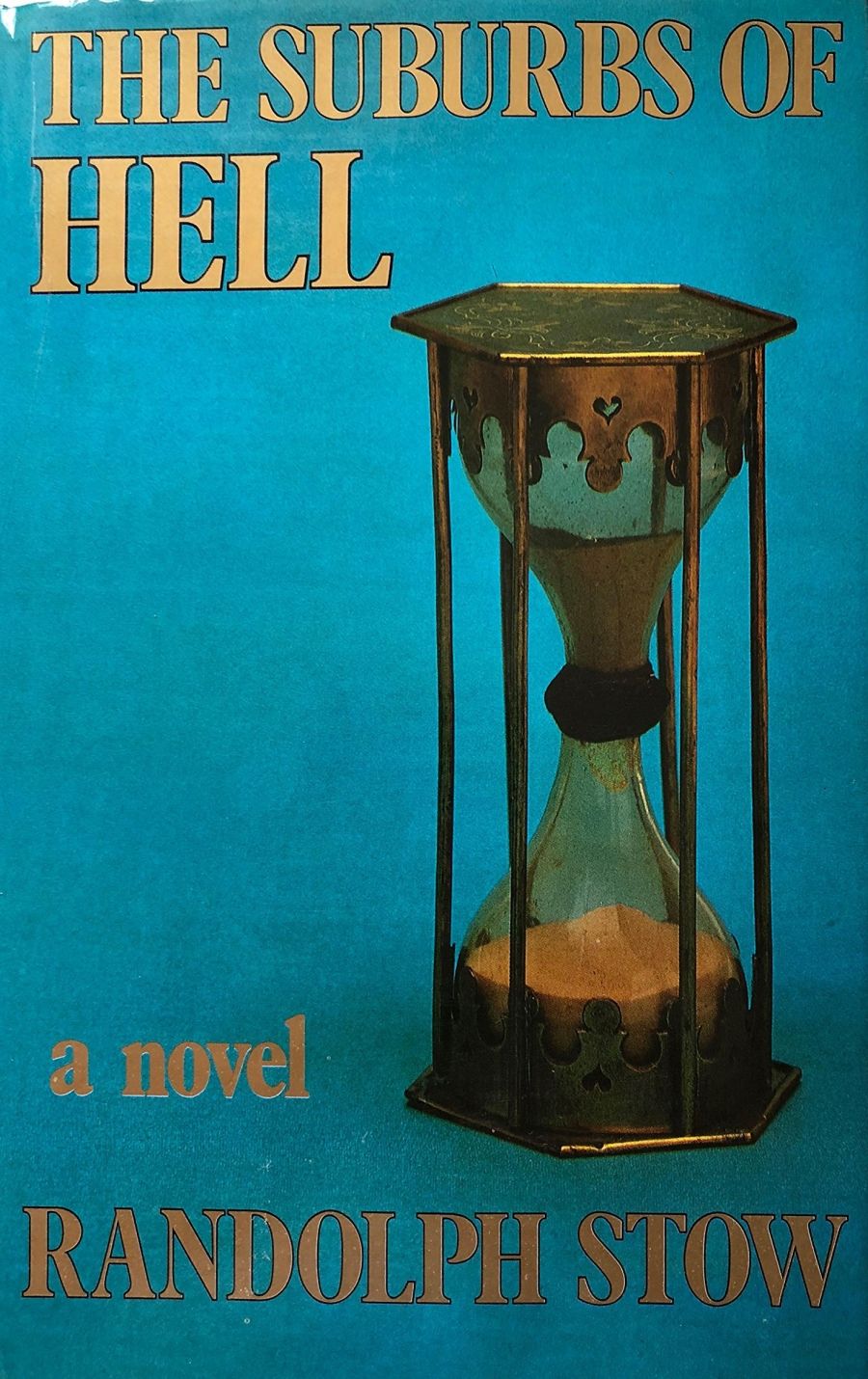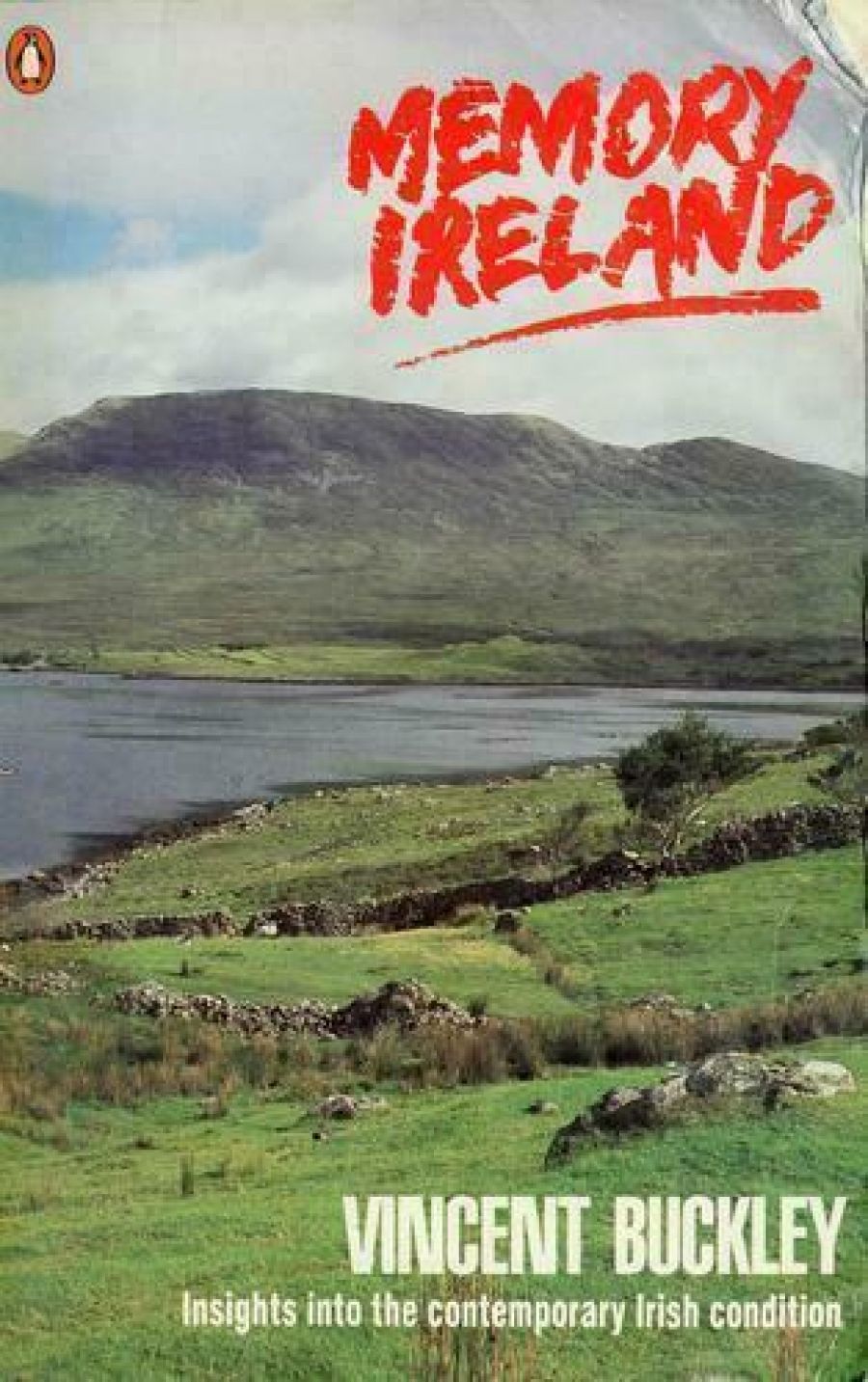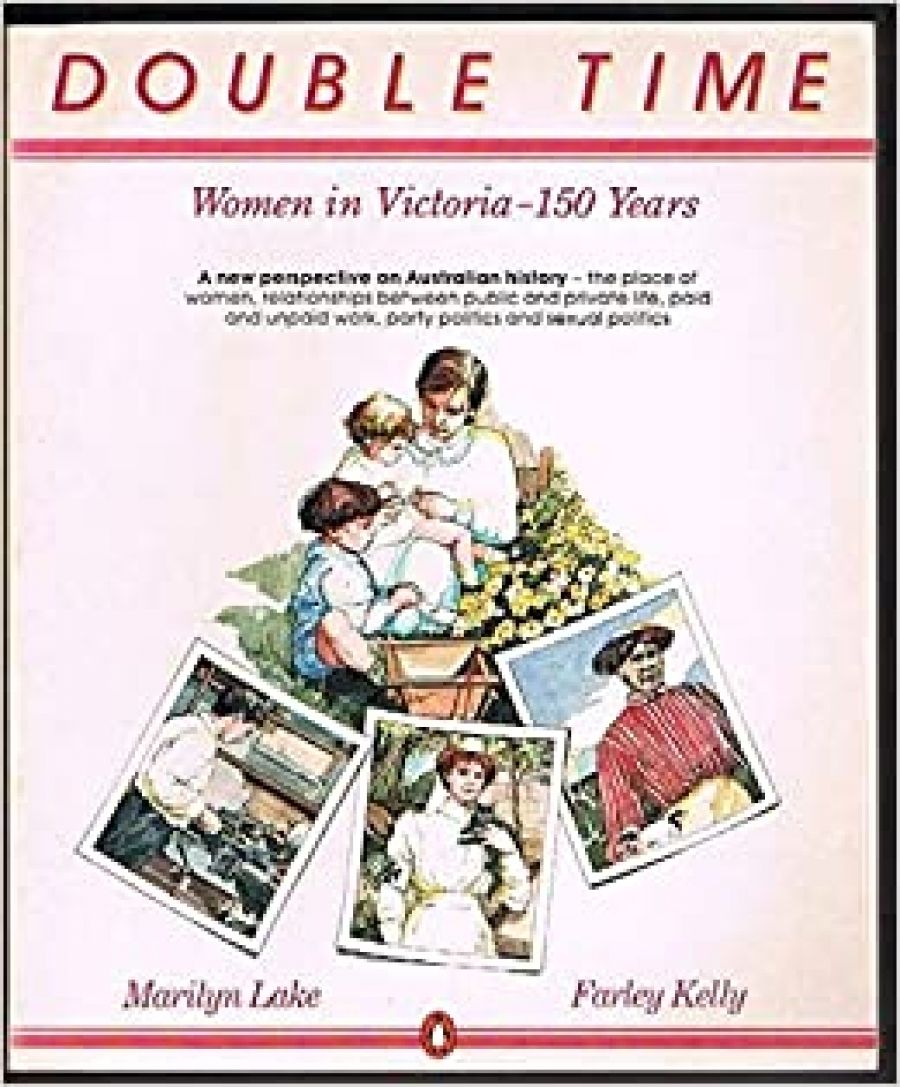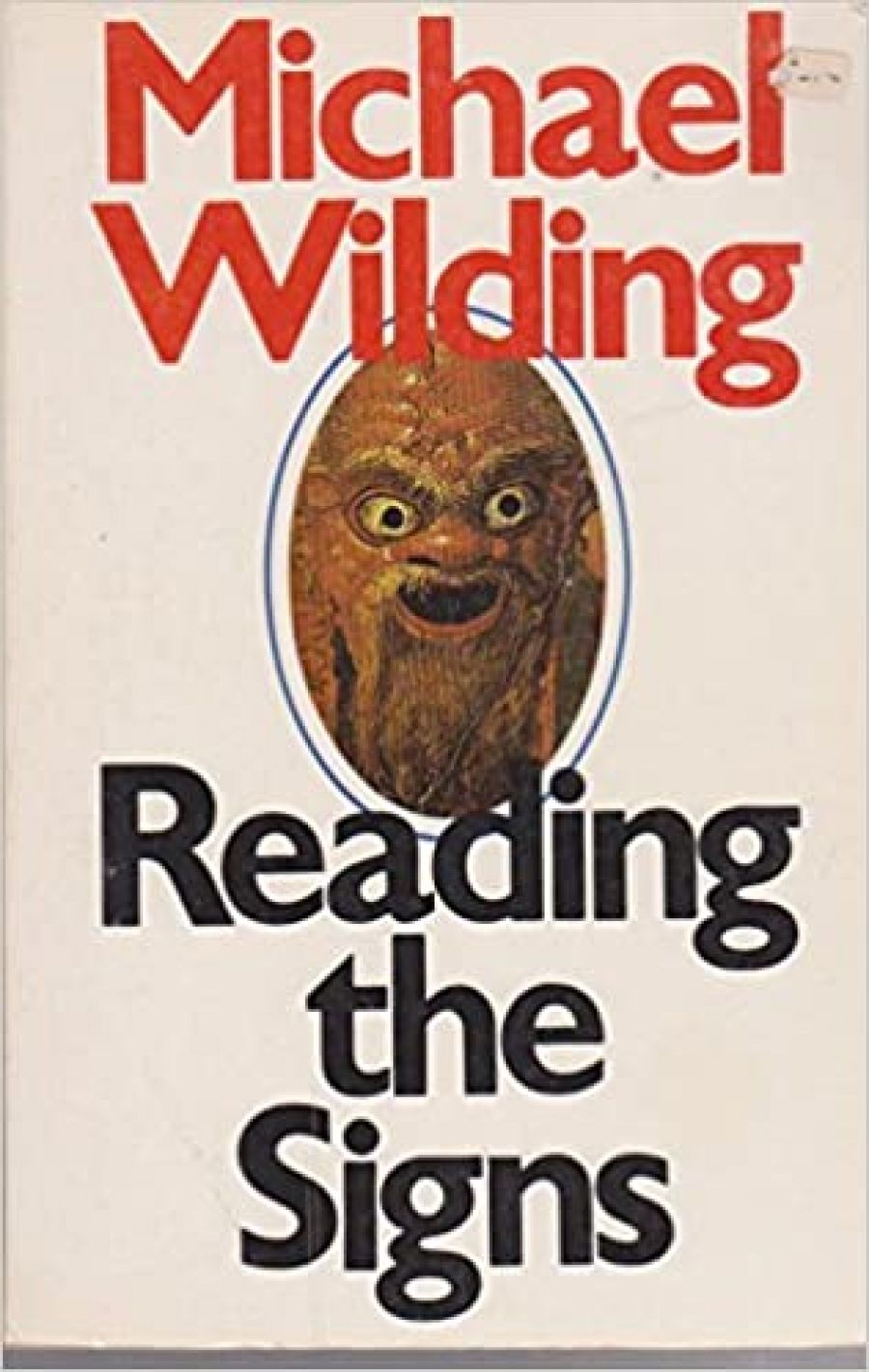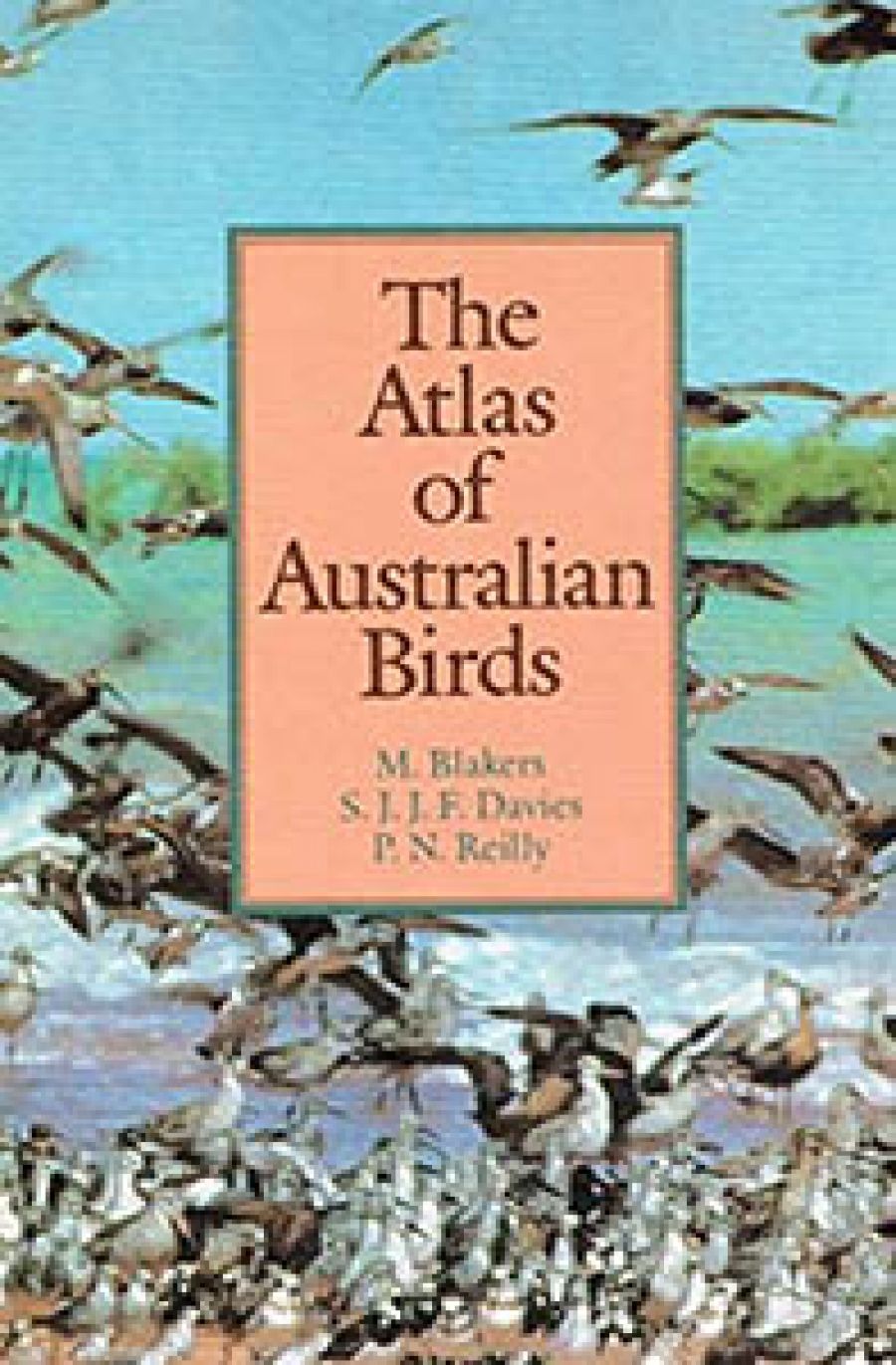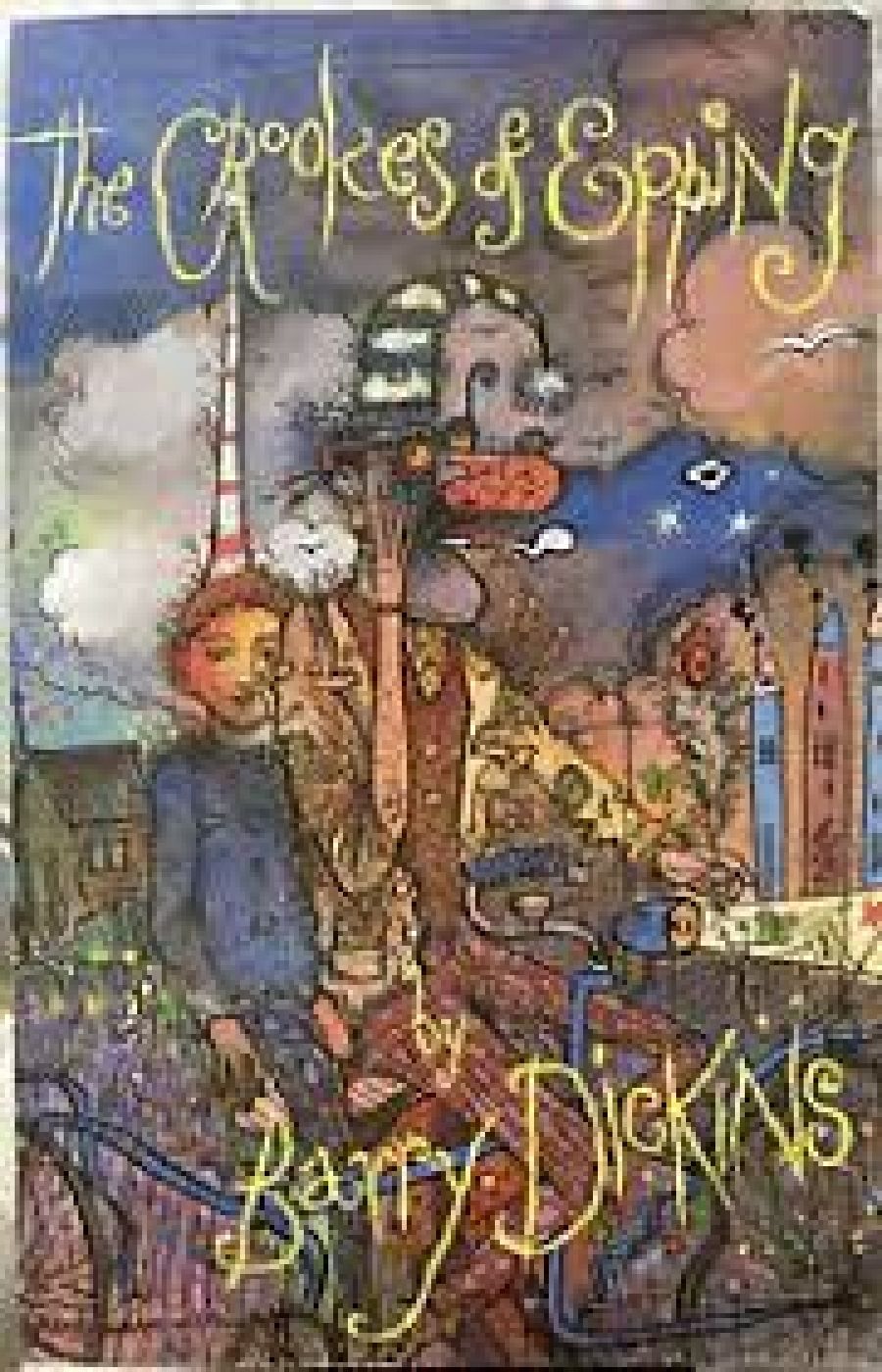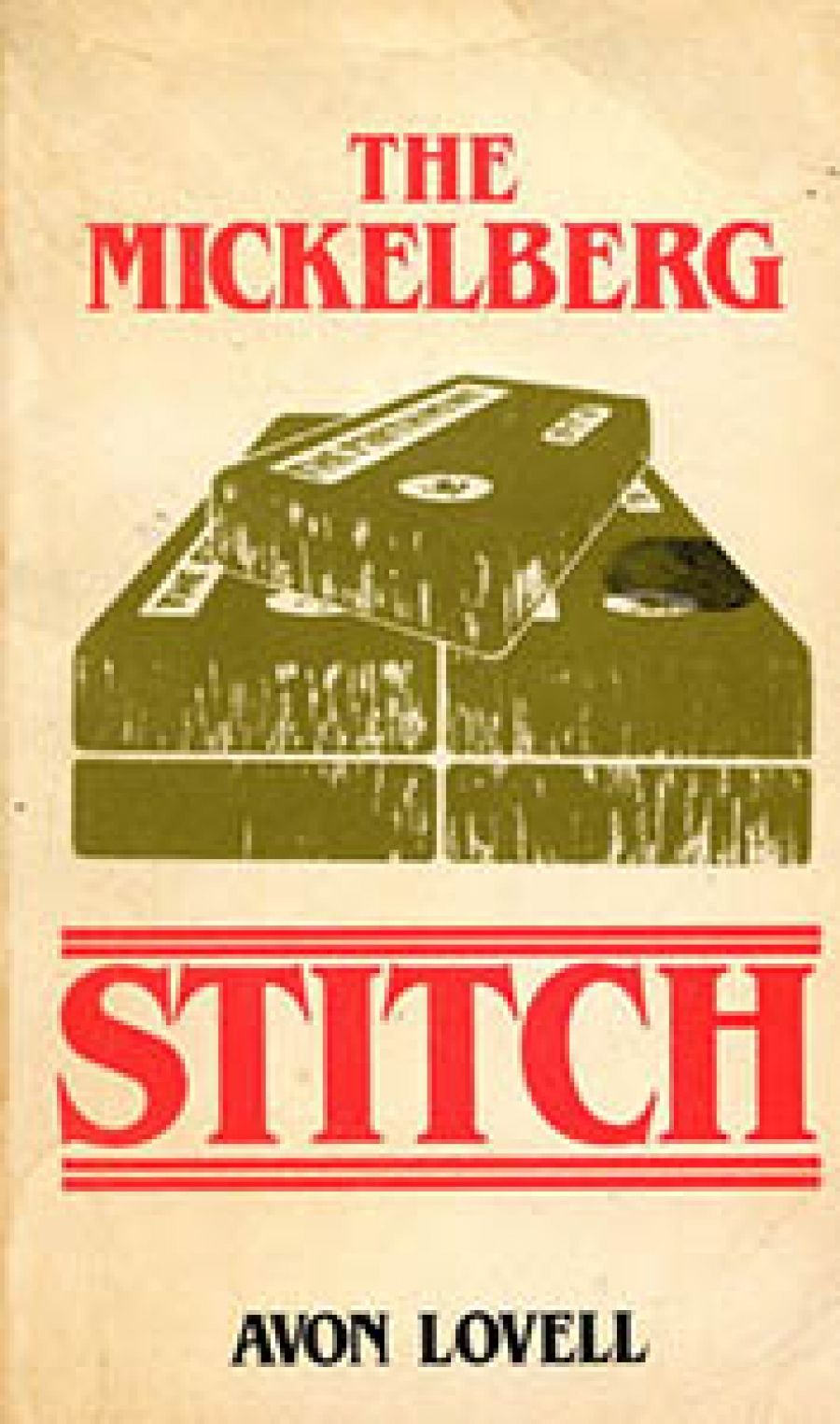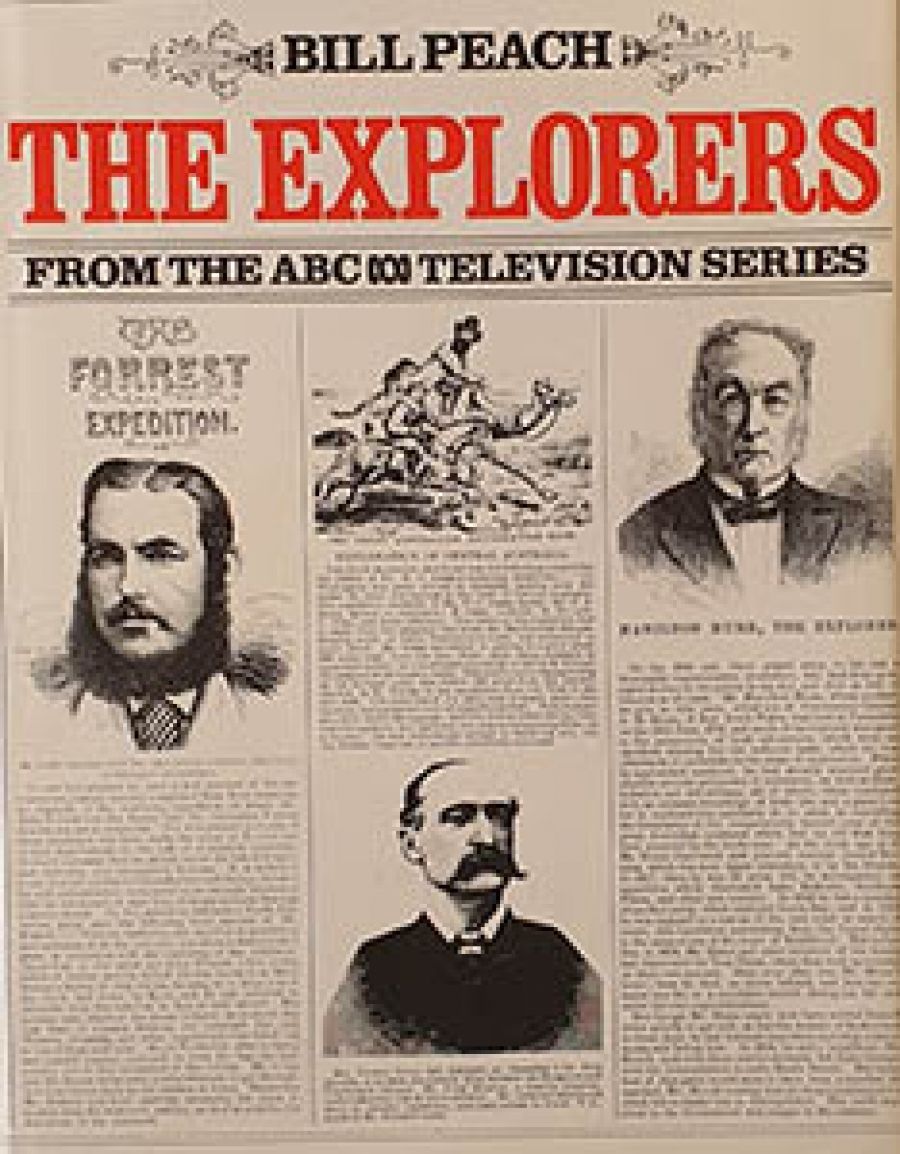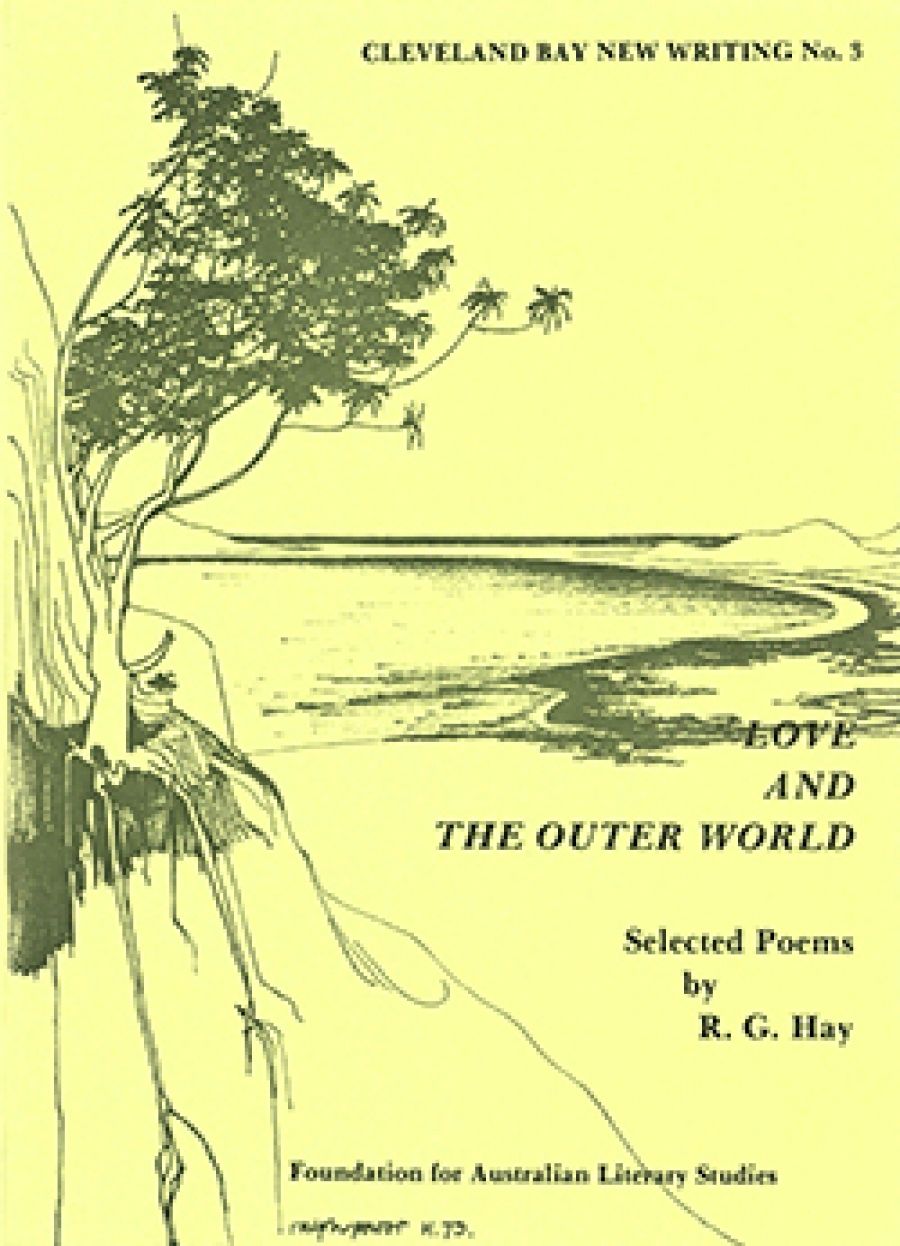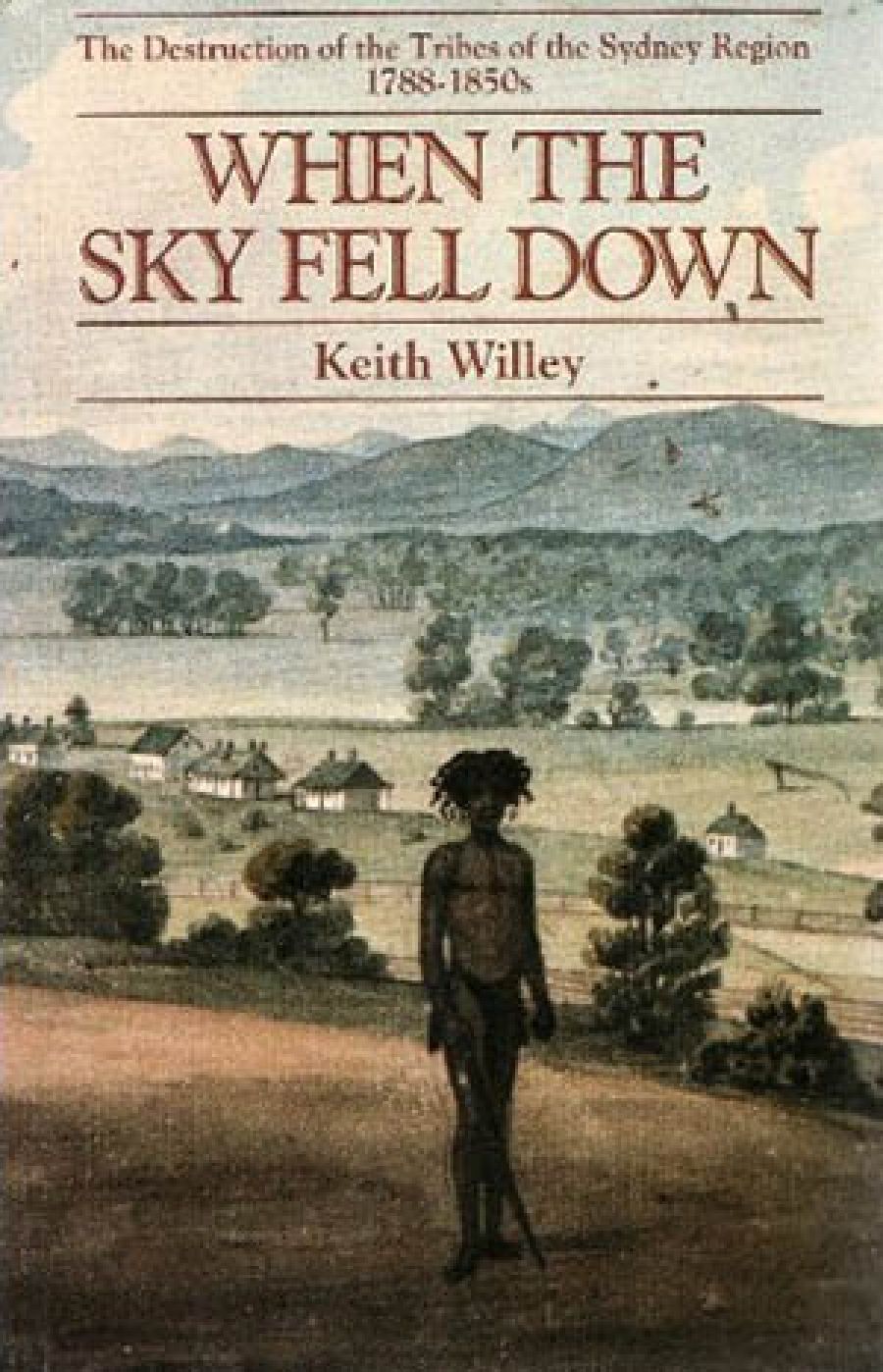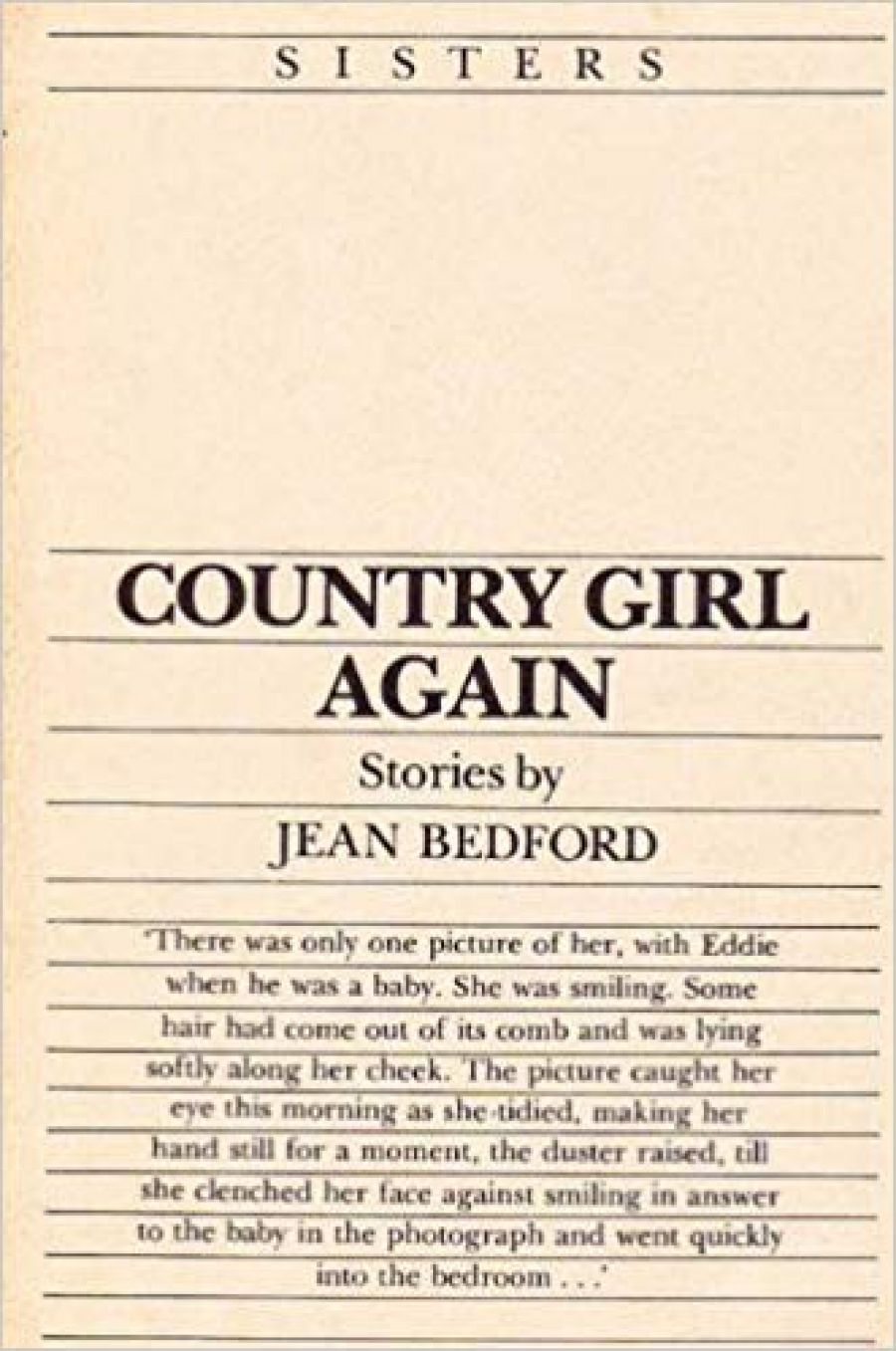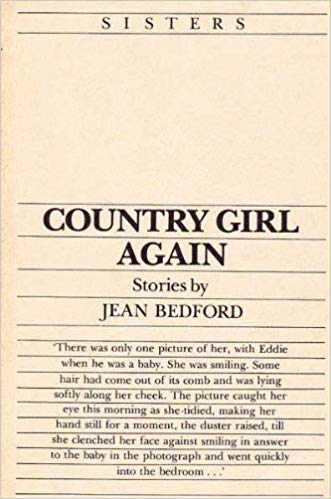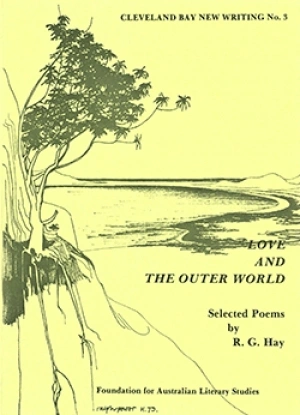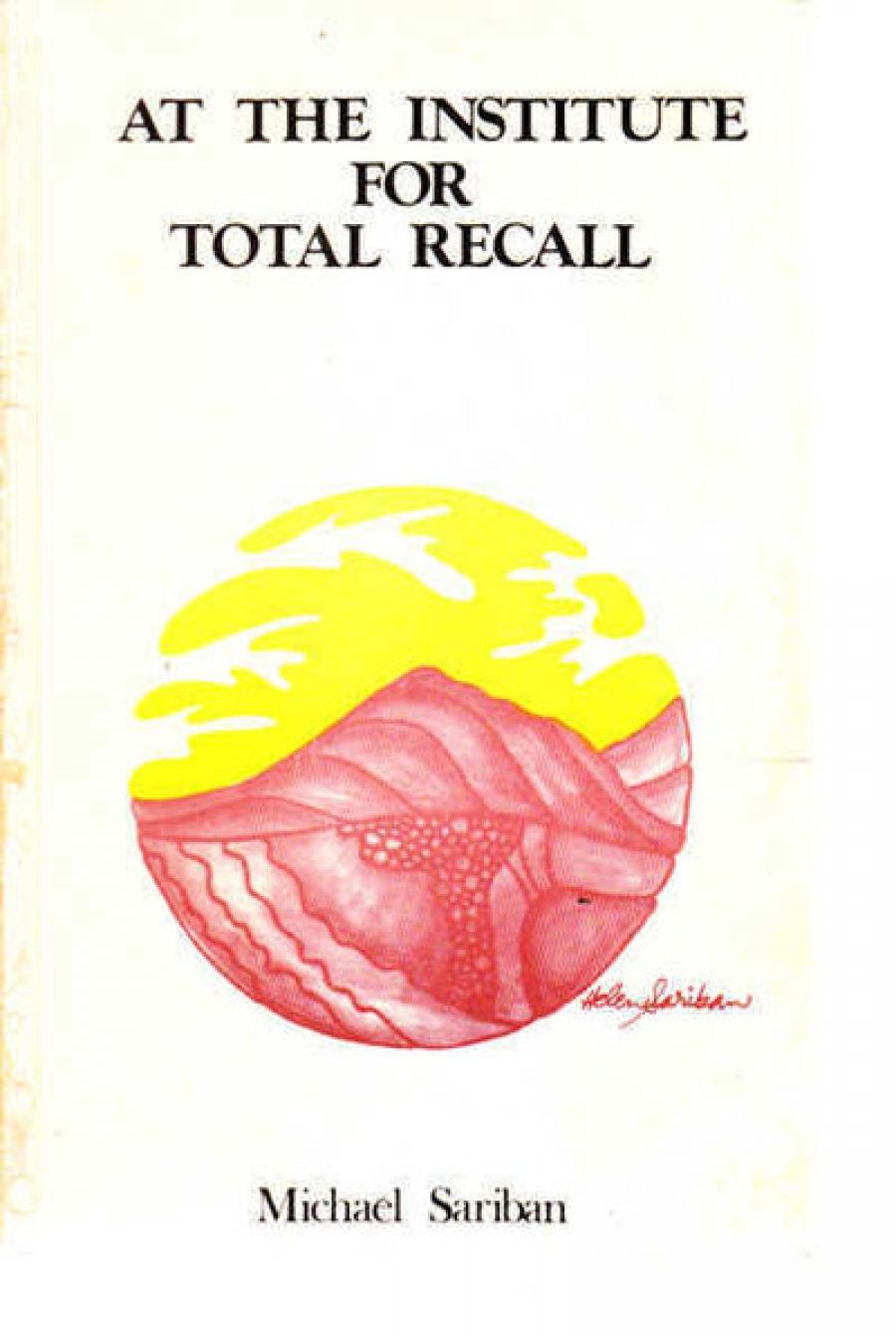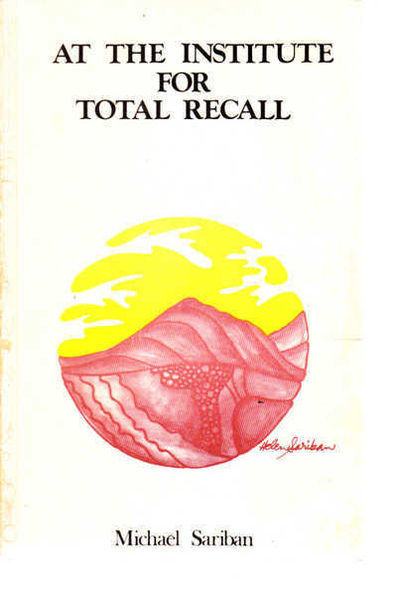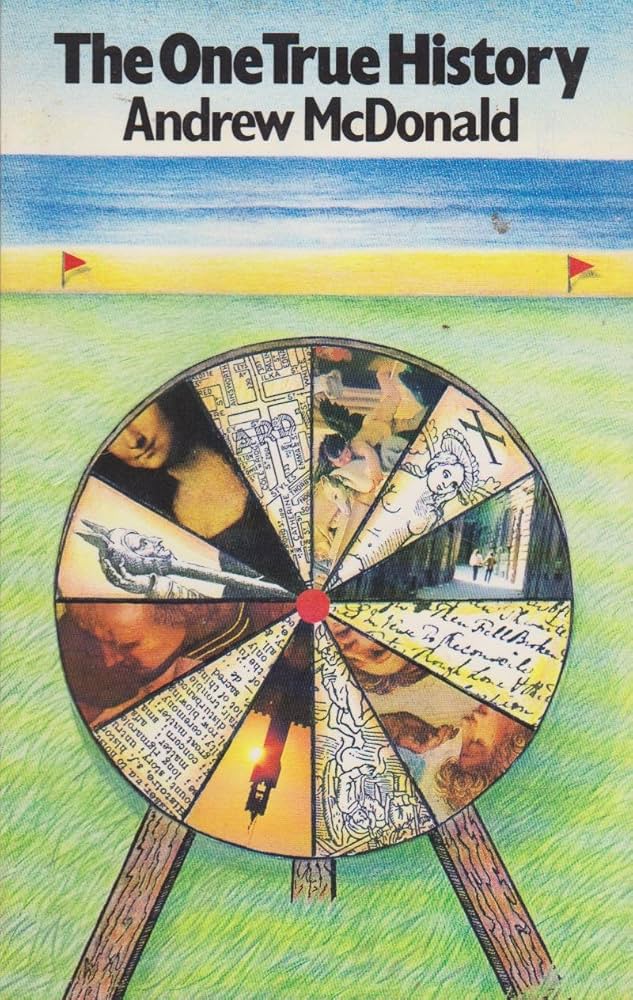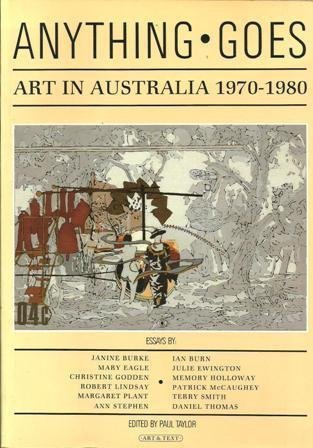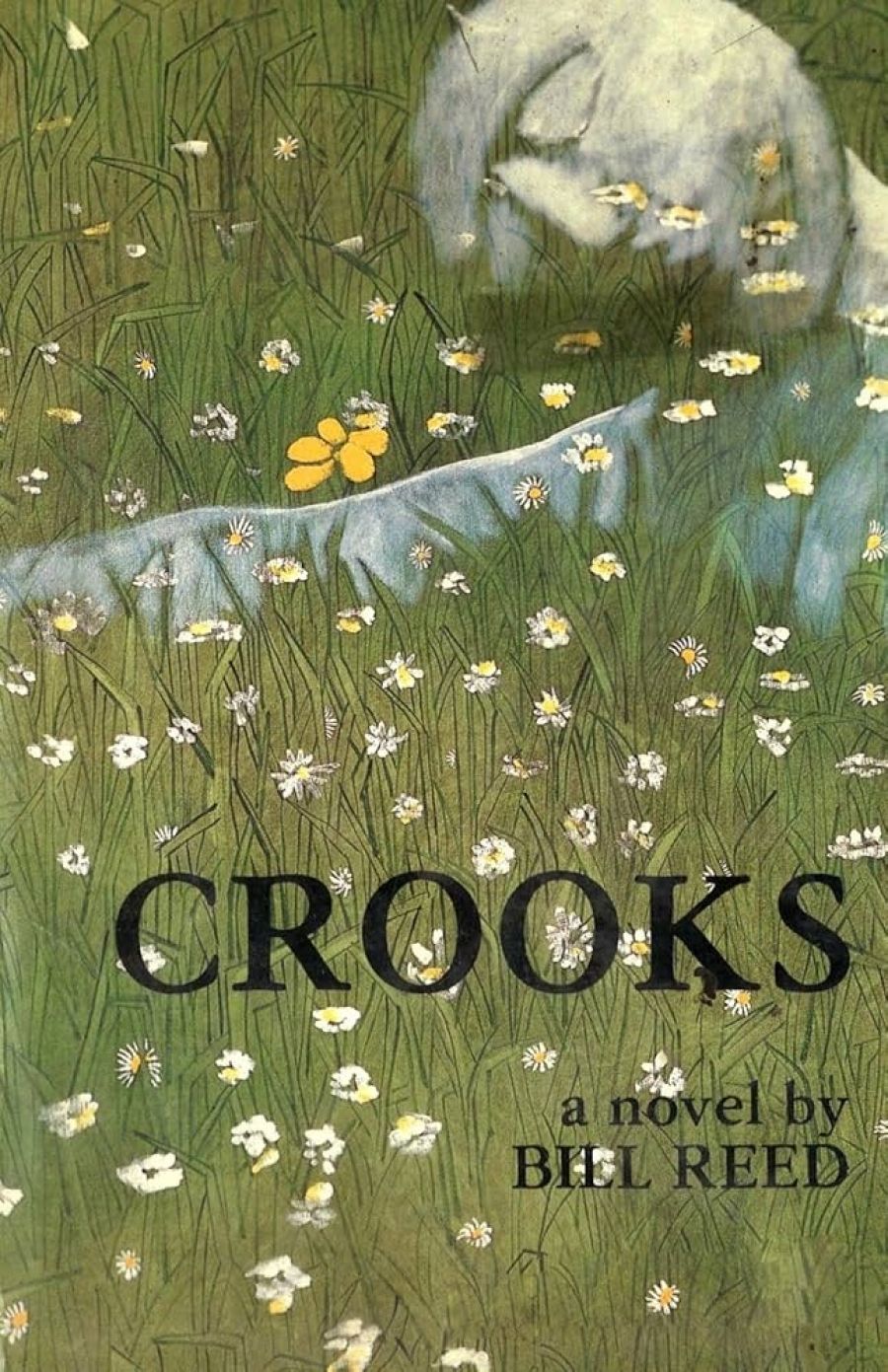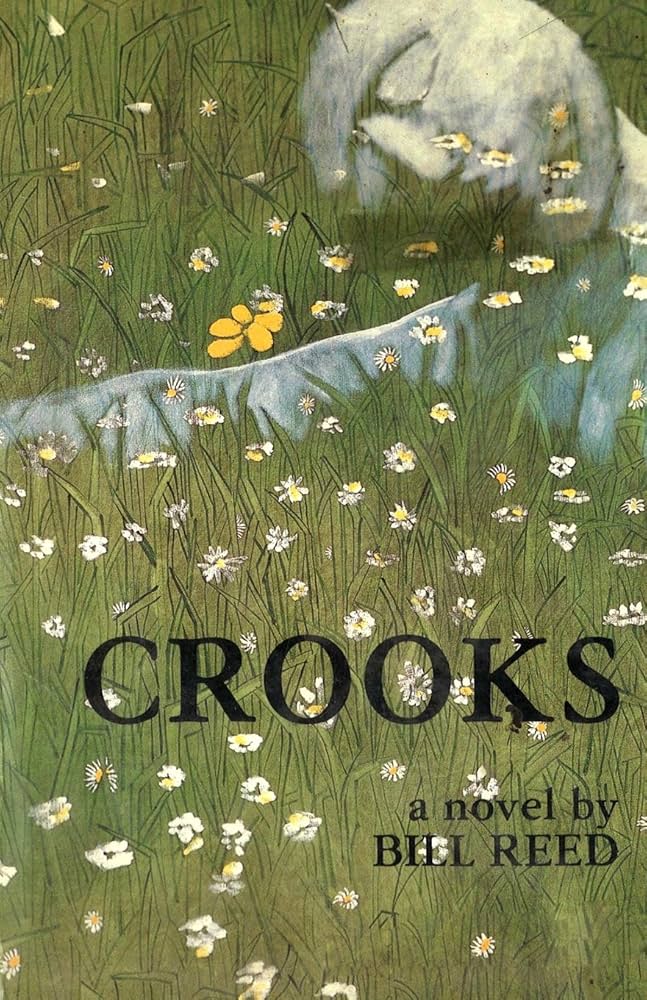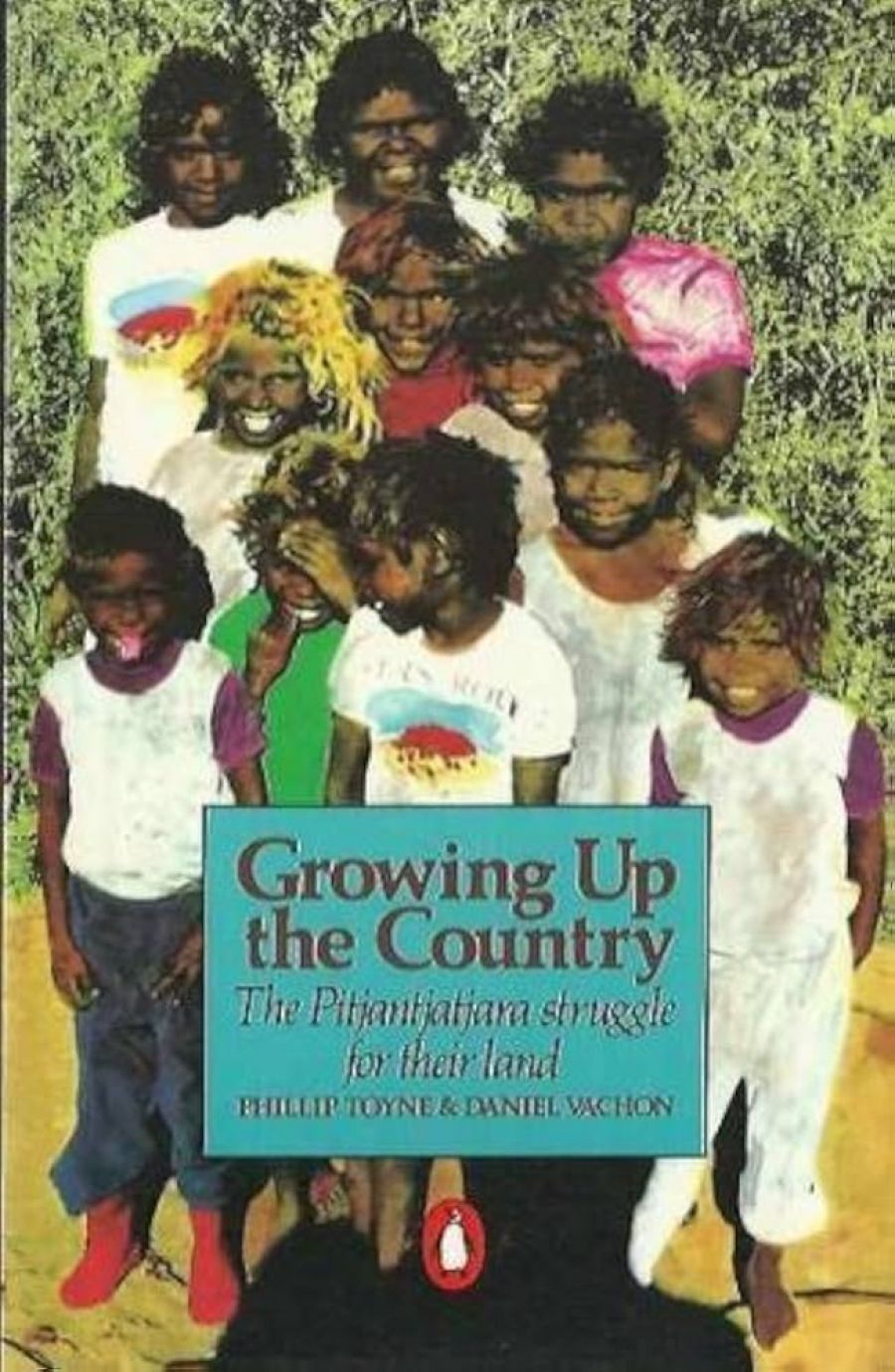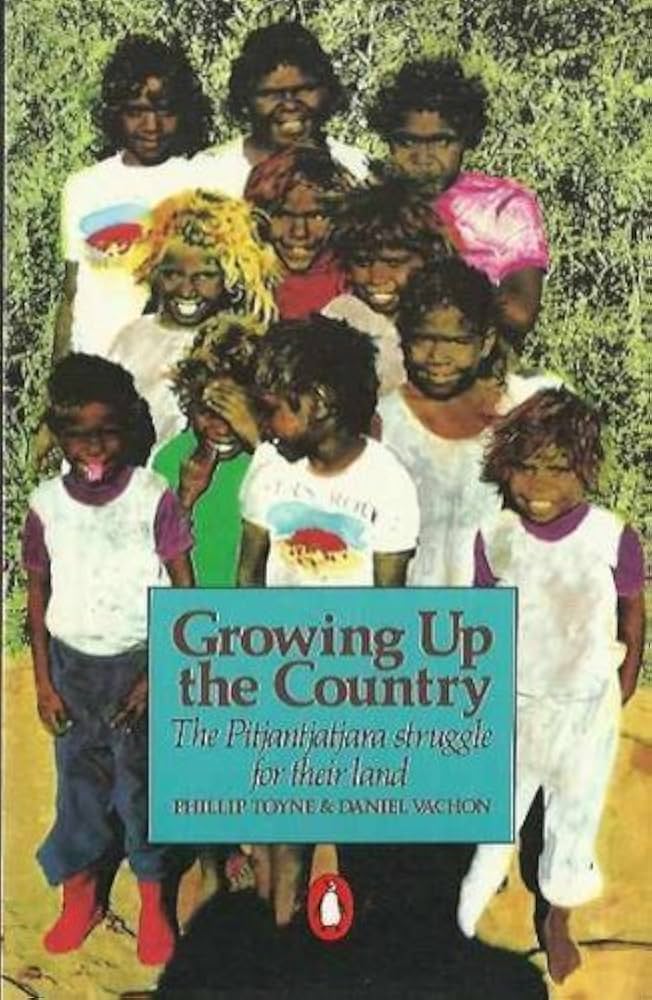National Reconciliation: The speeches of Bob Hawke (selected by John Cook)
by R.J.L. Hawke
William Collins, $6.95 pb, 232p., index,
0 00 636732 I .
For those who wish or need to know what the Great Conciliator has been saying, it’s all here. Neville Wran, in an introduction, claims that the set speech is still important in politics. Perhaps so, but the level of platitude and generalisation in these, as in most, political speeches raises doubts. In speeches ranging from the 1983 policy speech, through speeches on the Franklin Dam Australia’s place in the world, youth employment – he’s for it – immigration and multiculturalism, arms control and disarmament – he’s for them also – to the 1984 National ALP conference, the content is high on self-congratulation, facts and figures, low on argument. The question must be raised – is this lack the fault of the reporting which mediates our politics, concentrating on personalities, on the phrase wrenched out of context and on the policy misrepresented by extremes?
By John McLaren
Incomes and Policy
by Ian Manning
Allen & Unwin, .$19.95, $9.95 pb, 192p., biblio., index,
0 86861 0631; 086861071 2 pb
Author is research fellow with Institute of Applied Economic and Social Research in Melbourne. The book attempts to be a description and an evaluation of the Australian distribution of income in the context of the current debate about policy and incomes.
Patrick Weller
First among Equals – Prime Ministers in Westminster Systems
by Patrick Weller
Allen & Unwin, $14.95. 228 p, biblio, index,
086861 500 5
As well as a consideration of the Westminster system is a succinct survey of Thatcher, Trudeau, Fraser and Muldoon.
The Austraflora Handbook
by Bill Molyneux & Sue Forrest et all
Austraflora Nurseries, Belfast Rd., Montrose Victoria
Distributed by Gordon & Gotch, $46.96 pb, 74 p, illus,
0 959047 409
Austraflora is known to native plant enthusiasts as one of the most comprehensive and longest established specialist nurseries in Australia. Its proprietor, Bill Molyneux, has written widely on native plants and his Native Gardens (co-authored with Ross Macdonald; Nelson, 1983) is an excellent introduction to garden design. As consultant for BP (Aust.) Ltd he has been responsible for service station landscapings that are both practical and imaginative.
The Austraflora Handbook, by a team of writers which also includes Sue Forrester and Roger Stone, has developed from the nursery’s well-known catalogues. An introduction of nine pages on growing native plants is followed by a comprehensive alphabetical listing of over 700 trees, shrubs and climbers. Specialised sections identify groundcovers and climb ing and creeping plants. There are also brief listings of plants for gardeners with very specific needs or those wanting only one or two plants to fill gaps. One of these lists is for Australian native plants to be used as cut flowers – an aspect ignored by most other writers in this field.
The comprehensive listing, which is by botanical name, gives popular name, brief description, size of fully-grown plant, growing conditions, and bird attraction. The colour coding of the three main lists is limited to a band colour on the first page of each list; this could have been usefully extended to the tops of all pages in the second and third lists. There is a well-chosen selective bibliography.
Attractive production and a modest price will recommend The Austraflora Handbook for purchase by gardeners who are both beginners and specialists in Australian native plants. Also recommended for public libraries and other appropriate collections.
By Vida Horn
The Australian Scented Garden
by Chris Pirie
Harper & Row, $19.95, 140p, illus, index,
0 06 312059 3
There is much sound advice here for beginners seeking to develop a systematic plan for a year-round scented garden. Pirie properly notes that both colour and perfume are rewarding outcomes of design, and that fragrant plants frequently offer little visual pleasure. Native and exotic are represented in the text and in a splendid set of photographs. The final chapter on potpourris provides basic advice on giving some permanence to otherwise transitory pleasures.
By John Anwyl
The Auctioneers
by Carl Ruhen
Ayers & Jame., Heritage Books 5 Alexander St., Crows Nest 2065 $19.95, 160p., illus., index,
0 949256 005
Q. What have Henry Parkes, James Tyrrell, Hardy Wilson and John Norton in common?
A. Their art collections were all auctioned by Lawsons.
James R. Lawson Pty. Ltd. are celebrating their centenary by publication of a history covering the origins, personalities, notable collections and day-to-day work of Sydney’s best-known auctioneers.
Carl Ruhen has made the most of rich source material, and produced a book which is both informative and entertaining. The publishers, Ayers and James, are already known to librarians as the agents for Ulverscroft Large Print books. They have entered the publishing field with an attractively produced book which adds an interesting and readable chapter to Australian art and social history.
By Vida Horn
Human Growth: Its Source and Potential
by Jim Cairns
Research for Survival P/ L, Box 297, Canberra 2600, no price given , 184p., index,
09592700 3 5
Human Growth looks for the good in humankind and hopes we are about to build a better future on it.
His Green Alternative, however, seems to build on somewhat shaky anthropology, and tendentious authorities.
I cannot be reminded of Doris Lessing’s satirical filth book in her Archives series from which I quote a set piece for students of rhetoric.
What is it that in the past has given birth to sorrow, bred unkindness? Why, only the lack of the will to abolish these things. And now everything has changed, for now we have the will and we have the means…Forward, to happiness and love.
Jim Cairns has the will, I cannot see that he has demonstrated the means.
by Barbara Giles
How will I vote?
Edited by Laurie Oakes
Drummond/ Dove Communications, 60-64 Railway Rd., Blackburn 3130
$9.95 pb, 152 p,
0 85924 353 2
This primer on Australian politics and government gains points for timeliness given the informal vote of December last. However, its advice is pricey at $9.95 for only 151 generously spaced small pages. Blewett, Steele Hall, Ralph Hunt, Chipp and Harradine come to the aid of their parties with shameless 10-20 page puffs.
It is very elementary stuff targeted at school children looking forward to their first trip to the polls.
by John Anwyl
Eamin& a living in the visual arts & crafts In Australia
By James F. Stokes
Hale & Iremonger, $29.95 $14.95 pb, 252 p., illus. index
0 86806 122 0; 0 86806 123 0 pb
The photographed objects chosen for the excellently designed cover of Earning a living in the visual arts & crafts in Australia would, without the title, sum up what the contents are all about thereby obeying the first principle of book presentation – fitness of purpose.
There has been no book written – nor will there ever be – about how to succeed financially working at ·the visual arts and crafts. But, if you’ve made your wealth in this area, James Stokes presents a very useful, exceedingly detailed guide with expert advice about how to manage the multiple complications of legal protection, marketing. pricing of wares your copyrights, of taxation and the other necessities of what is after all a business.
The advice is thorough and in study terms, perhaps to some. could be heavy going. But the thoughtful contents page together with the index will allow the reader to consult readily a subject of concern. The author, a lecturer in arts and business studies (a quaint corn bination) at Newcastle College of Advanced Education has produced a valuable reference for those who are starting out or, who are already in the business of the visual arts and crafts.
by Vane Lindesay
David Lange
by Vernon Wright
Unwin Books, in association with Port Nicholson Press, NZ, $10.95, 14 p, illus
0 86861 490 X
Written in 1984, the story up to that time of New Zealand’s Gough Whitlam
Alan Marshall’s Battlers
by Alan Marshall
Pan, $4.95 pb, 170 p,
0 330 27058 3
This final collection of Alan Marshall’s work contains some pieces that have appeared before in book form and others, mostly from the thirties, that have only appeared in newspapers before this.
It reminds us, if we needed any reminding, of Marshalls outstanding personal qualities – his humour, courage and intense interest in people – and of how early he committed himself to the cause of the dispossessed in Australia, especially the poor and the blacks.
By Laurie Clancy
Teach Your Child to Swim
by Linda McGill
Rigby, $7.95 pb, 88p., illus,
0 72702033 1
This is one of those publications which feels good (the paper is smooth) and looks good (the photos are clear and instructive).
The book is written simply with an understanding of parental needs, children’s developing motor skills and a practitioner’s appreciation of what takes place when child and water meet. For all the practical guidance to the parent, the book manages to convey a love of swimming for its own and safety’s sake. Parent and child should feel confident with this instructor.
by Ludmilla Forsyth
Labor Essays 1984
edited by Jim Eastwood, John Reeves, John Ryan
Drummond/ Dove communications $14.95 pb, 214 p, index,
0 85924 315 X
This, the fifth volume in an annual series, concentrates on economic, social, and industrial relations issues facing State and Federal Labor governments. There is one chapter on Australia’s relations with Pacific neighbours/
Like its predecessors, this volume deserves to be widely read for its emphasis on practicality and avoidance of utopian fantasises. It is a useful record of a broad range of left of centre opinion on the key items which are or should b high on the 1985 political agenda. It stars a great many hares and may irritate some readers for letting some of them escape detailed scrutiny. While most of the discussion doesn’t result in systematic policy-formation it usually [provides good date set of facts and issues and broadens the repertoire of possible strategies.
by John Anwyl
Bob Brown of the Franklin River
by Peter Thompson
Allen and Unwin, $9.95 pb, 203 p., illus, notes, index,
086861 596 X
The author is a current affairs journalist. His story is that of a shy young man who harnessed public opinion to save a relatively obscure river in Tasmania and was a major contributor to mass demonstrations throughout Australia which were equalled only by the Vietnam demonstrations. This tells in graphic detail how it was done.
by Alex Sheppard
The Islands of Sydney Harbour
by Simon Davies
Hale & Iremonger, $6.95 pb, 88p., illus,
0 86806 187 5; 0 86806 188 3 pb
Who would have thought that there are eight islands in Sydney Harbour? Even more surprising, there were originally five more islands which over the years have been integrated with the mainland.
The history and present-day use of the islands is presented in illustrations and brief text. There is a good bibliography and a rather inadequate map. School and public libraries will need this book for both school assignments and for general readership. It would also be a welcome gift for both Sydneysiders and tourists. Acquisitions librarians please note: there are both a hardback and a paperback edition but the publishers have supplied the price for the paperback only.
by Vida Horn
Double Depression
by Ian Watson
George Allen & Unwin, $15.95, $7.95 pb, 160 p., index,
0 86861 580 3; 0 86861 588 9 pb
When my middle-class-brought-up children say, ‘It’s alright for you, you didn’t have to worry about getting a job’, I do feel I was part of the Lucky Generation. When I read the case studies presented by Ian Watson in this book, I recognise what my children don’t recognise and that is that they are part of a luckier group than they realise.
Double Depression is a well-chosen title. The book contains a series of case studies focusing on ‘Schooling, Unemployment and Family Life in the Eighties’ – its subtitle.
These studies are taken from Watson’s thesis in the social science area and made accessible by a change in style and layout (a necessity he acknowledges).
The aim of the book is ‘to offer to a wider audience ... conversations and ... insights’. What the book also gives is a clear and unjargon commentary and an examination of the ideology inherent in the conversations. The writer also reveals his sympathies, his humanist concern for those doubly depressed.
by Ludmilla Forsyth
Reading the Country
by Kim Benterrak, Stephen Muecke, Paddy Roe
Fremantle Arts Centre Press, $29.50 pb, 252 p., illus,
0 909144 88 5
In 1982 Fremantle Press issued Paddy Roe’s Gularabulu, an extremely sensitive rendition of several tales offered by this Aboriginal racounteur.
Now, in a more lavish format, the relationship between this Broome stockman and his land has been teased out, further elaborated, and more fully conceptualised by the unobtrusive use of European intellectual constructs. The result is a powerful account of the Aboriginal sense of place, a valuable addition to the growing library of books documenting the diversity of cultural responses to the Australian landscape.
Highly recommended.
by Robert Pascoe
Daisy Chains, War, then Jazz
by Kathleen Mangan
Hutchinson, $19.95, 204 p., illus,
0 09148620 3
Kathleen Mangan, the youngest daughter of Frederick McCubbin, has written a charming and lively memoir of her childhood and youth in Melbourne from 1907 to the mid-Twenties.
This gentle, good-humoured book will be welcomed by readers who enjoy the recall of a past era with which they can identify.
by Vida Horn
Mentone: The Place for a School
by Pauline B. Burren
Hyland House, $21.50, 17 4p.,illus., index,
0 908090 72 2
Burren has adapted her University thesis on Mentone Girls’ Grammar School into a book whose appearance, price, and size will appeal to a captive audience of actual and prospective ‘old girls’.
It deserves a somewhat wider audience for it records the grit, co-operation, imagination, ingenuity, and luck necessary to ensure the survival of tee-playing second league grammar schools before salvation came in the form of State aid.
Burren is careful to provide some account of the educational philosophies in vogue in the school at various times, and to give sufficient social backdrop to add perspective to the internal dramas.
by John Anwyl.
Badges of Labour; Bannen of Pride
by Anne Stephen and Andrew Reeves
Museum of Applied Arts and Sciences and Allen and Unwin, $17.95, 8 p, each page illus, colour and b&w,
0 86861 510 X
A glorious history of the banners carried by major Australian trade unions in various marches, with notes illustrating them and their long histories and traditions. A marvellous work.
by Alex Shappard
Poetry
by Barbara Giles
Lines by a Woman Scorned and other Verse
by Anne Taylor
$00 pb, 15 p,
It seems you’ll need a clairvoyant to find this book. Don’t worry, it’s neat but not gaudy, literate but not lush; rather sad verse that, its purpose accomplished, should have stayed with the writer.
Soft Lounges
by Antonia Bruns, John Jenkins (eds)
Fringe Network,
201 Brunswick St., Fitzroy 3065 $6.00 pb, 156 p,
0 959 2402 1 7
I’m glad the Fringe anthology describes its contents as ‘new writings’ rather than ‘new writing’. It is much the mixture as before, and as usual for anthologies some work is good, some not so good, some witless.
Style isn’t to be assumed like a cloak, but stems from the original impulse, and the further it is from ‘straight’ the sooner it is dated. Ania Walwicz, once impactful, is here imitating herself, to borrow her words it’s a leedle oolee oolee. Antoni Jach gives us four pages print-solid, which· is too, too hard to read.
Let’s look elsewhere. Peter Lyssiotis, clever photo-montage, I like the waterfall, the dive-bombing birds. Likewise mixed print and photo from Ernie Altoff. Carmel Bird, evocative, amusing mix of old advertisements and material information in. Every Home Should Have a Cedar Chest. Striking poems from Antonia Bruns, komninos zervos (e.e. cummings, that lower-case highbrow did that in the twenties), John Howard, and others. Interesting graphics, Diana Corr, Ian Paradine. Good stories in current mode from Jeff Maynard, Clare Fleming, and Robert Whyte tongue-in-cheek. In fact, the anthology is overall a great move forward from the first.
Just read the blurb, though. Innovative? Bone up on the past whoever wrote that.
Fringe Network is a Melbourne organisation which organises an annual festival of arts events outside the mainstream of cultural activity. Its newsletter provides a guide to countercultural activities, and this, its second annual anthology, records some of the written consequences of the festival.
Zoetropes: Poems 1972-82
by Bill Manhire
George Allen & Unwin, $9.95 pb, 80 p,
0 86861 688 5
This book contains selections from three previous books plus eight new poems. Many of the earlier ones are like the poems of a sane Plath, the same easy control of tone and rhythm, an effortless structure which nevertheless makes large demands on the reader. Sometimes, as in On Originality, he uses a poem-long metaphor, the poet here is a murderous thief who plunders each poet in turn.
Sometimes he is utterly simple, using the worn coins of daily speech, often in words of one syllable, as in the Elaboration ...
There was a way out of here
it went off in the night
licking its lips
The door flaps like a great wing I make fists at the air
and long to weaken
Ah to visit you
is the plain thing,
and I shall not come to it.
The more recent poems are longer, but no more fully explained, he trusts his reader to bring them to the concentration these poems, each one different, deserve. By turns witty, colloquial, compassionate, contemplative, this is a poetry to read and read again.
The Inland Sea
by John Jenkins
Brunswick Hills Press,
80 Wilson St., Brunswick 3055
$5.95 pb, 48 p,
0 9590929 0 0
An uneven book. Much that’s pretentious, flim-flam or banal. It would certainly take the Astra choir to lift Entropy, with its listings of the usual, to ·get this poem Flying and flying, even if All these things/have little wings.
There is a flavour of the sixties here, with the emphasis on objects as definers of the ordinary. Jenkins should lift his game into the eighties, emphasise the sur in the surreal. Nice cover, and the ‘Inland Sea’ one of the best poems. in the book.
Contemporary Indonesian Poetry
edited and translated by Harry Aveling
UQP $12.95 pb, 262 p
07022 0932 5
This collection of now not entirely conemporary Indonesian poetry is reissued by Queensland University Press in a slightly smaller format.
It would interest others than students for its inclusion – approximately one third of the book – of Rendra’s social consciousness poems.
Come Down Cunderang
by John Millett
South Head Press, The Market Place, Berimma, NSW. 2577
$7.50 pb, 116 p, 0 909185 20 4
Subscribers to Poetry Australia nowadays have to accustom themselves to the fact that they’ll get, not regular anthologies, but also a mixed bag of poets, some fine, some just what they don’t want.
This just falls what midway, it isn’t a patch on Tail Arse Charlie being an artifact rather than a living entity, full of Irishry, sexual giants with ‘jewels in their semen’, men and pigs always ‘doing it’, ‘wide women full of sap’, the lilt of Irish laughter, endless lists, and horses that are apparently unique in that they have ‘gene pools going back many lifetimes’. Hydromel, sounding so much sicklier than mead, drips on many a page, but hunt around, you’ll find some poems that are sober.
The are Irish influence has been strong in Australia, any student of language knows how much we’ve stolen their idiom to enliven our speech and in more important ways we’ve absorbed a lot of Irishry, but Come Down Cunderang smacks of the stage rather than life.
Everything is Relative
by Pauline Wardleworth
WAV Publications, Box 545,
Norwood 5067
$8 pb, 92 p,
095911861 6
Pauline Wardleworth has a gift for words and images, a gift which can at times strangle a poem and drown it in honey.
In her best poems she succeeds admirably, controlling her two-edged tool and speaking with a voice both compassionate and shrewd. Among the poems which most impressed me were the poems about her father, The Guardian and largely, To The Poets in my Head, a poem most poets have tried to write and found almost impossible.
by Barbara Giles,
Poetry Australia – Twenty-one years
South Head Press
$25 (five issues), 85 p
090918521 2
This excellent issue, to celebrate 21 years of continuous publication, contains 35 poems, mostly by well westablished Australian poets. One essay deals with the contributions of the distinguished printing firm, Edwards and Shaw, alas now closed down.
by Alec Sheppard
History
by Robert Pascoe
Families in Colonial Australia
edited by Patricia Grimshaw, Chris McConville & Ellen McEwen
Allen Unwin, $24.95, $12.95 pb, 227 p., illus., notes, index,
0 86861 513 7; 0 86861 521 8 pb.
Sixteen essays by social historians, extending over all mainland States covering the span of the colonial period from the convict period to the early twentieth century.
A Place of Light & Learning
by Malcolm I. Thornis
UQP, $40, 430 p.,illus, index,
0 7022 1797 2
The University of Queensland turns 75 this year, and one of St Lucia’s historians has put together this readable and large tome. Australian universities have been well documented by historians: this one-avoids the institutional approach favoured by Alexander in his history of the UW A, and takes up the issues of student culture not always understood as a vital part of campus history.
With a cast of characters including Sir Raphael , Cilento, Zelman Cowan, Archbishop Duhig,’ Vince Gair, Humphrey McQueen, Fred Paterson and Sir Fred Schonell, this history brings together some interesting controversies. In 1971 the ViceChancellor expressed ‘deep concern at the possible threat to fundamental civil liberties’ in Queensland; the same Premier whose government occasioned this concern was to be awarded a St Lucia doctorate in more recent times (after this book would have gone to press).
Dictionary of Western Australians 1829-1914
Volume 4, Part I, A-K
by Rica Erickson
University of Western Australia Press
$30, 920 p
0 85564 229 7
The fourth volume in a monumental exercise in prosopography (collective biography). It is based on a cross-tabulation of all available documentary sources. A sample entry:
ABECCO Signor Raffaele & Madame. Were in W.A. (arr. or dep?) on Sea Ripple (PG) which was loading sandalwood for Singapore. A harpist who entertained Perth audiences for 2 years. Singer of popular American ballards of the day. Was a better harpist than singer. Toured country districts.
The work of many dedicated enthusiasts, this project is a basic reference tool for colonial Western Australian history. Rica Erickson is to be congratulated again for her patient endurance with this Dictionary.
The Ridge: A history of Middle Ridge State School 1884-1984
by Rae Pennycuick
Published by the Parents and Citizens Association, Middle Park State School, Spring St, Toowoomba, 4350
136 p, illus,
09590774 0 5
An intimate portrait of the school serving the locality on the outskirts of Toowoomba which began as a German enclave.
An appendix lists the children who graduated from this school, who’s surnames yield glues to the gradual assimilation of the local population and the post-war cultural diversity of the area.
The Devil’s Wilderness
edited by Alan E. J. Andrews
Blubber Head Press, $195 (leatherbound), $95 (numbered and signed)., 150 p, illus, biblio, index,
0 908528 12 4
In the same year as the Castle Hill convict rebellion, botanist George Caley was making his own attempt to break free from the confines of the Sydney penal settlement, heading west in an attempt to transverse the Blue Mountains.
Engineer and bushwalker Alan Andrews has performed a meticulous editorial job with Caley’s journal in this elegantly printed limited edition. A amass-market edition would appeal to bushwalkers who wanted to follow in Caley’s footsteps through this still untamed environment, full of mystery and beauty.
Death is a Good Solution
by A.W, Baker
UQP $40, 224 p, biblio, index
0 7022 1685 2
A precise comprehensive and authoritative guide to the literary depiction of convicts in the various penal colonies. Baker begins with an account of the British genre of criminal biography, touching upon Gay’s Beggar’s Opera and Fielding’s Jonathan Wild and proceeds to Kingsley’s Geoggrey Hamlyn, Clark’s Natural Life, and O’Reilly’s Moondyne and White’s Voss.
The tabular presentation of criminal themes will offend some litterateurs but students of the convict experience will find this an invaluable guide.
Charles Hotham: A Biography
by Shirley Roberts
MUP, $22.90, 202 p, biblio, index,
Hotham’s reputation was tarnished by Eureka, but he has now found a biographer concerned to laud his achievements in other parts of the world, particularly his interventions in the slave trade and in Argentina.
This biography lacks the depth and complexity of recent, professional efforts such as the biographies of Arthur and of Darling, but is at once very readable and accessible. Roberts is the Director of Radiology at Melbourne’s Prince Henry’s Hospital.
The Biased Boundary Umpire and other Riverian Reminiscences
by John Warren
Spectrum Publications. PO Box 75, Richmond 3121
$8.50 pb, 196 p,
086786 065 0
Two dozen vignettes of the life in the Riverina a generation ago, told by a woolclasser latterly a football administrator. Warren has an eye for the amusing anecdote, and his text is nicely complimented by Kirsty Hough’s black-and-white illustrations.
Stories range from fun and games in the local football matches, memories of the bush cinema, to adventures with the Italian Prisoners of War assigned to the family property.
Ralph Darling: A governor maligned
by Brian H. Fletcher
OUP $35, 474 p, biblio, index,
0 19 554564 8
With 120 ages of footnotes and bibliography, this is an exhaustive biography of this early Governor of New South Wales (1825-31). In its genre this is a major achievement, narrating in great detail the public life of an archetypal colonial administrator/ These interested in the social history of the convict regime and the early colonists may be disappointed by this book’s concentration on life viewed from Government House.
Coal in Queensland
by R.L Whitmore
UQP $30, 338 p, illus, biblio, index,
0 7022 1759 X
Whitmore, professor of mining and metallurgical engineering at the University of Queensland: here the story is taken from 1875 to Federation.
It is a technical and economic history, enlivened by good photographs, charts and maps, but not assaying the social history of the mining workforce and their families. Industrial archaeologists and economic historians will, however, find this work useful.
by Robert Pascoe
Re-issues
Snow on the Saltbush
by Geoffrey Dutton
Penguin, $9.95, 311 p, index, illus,
0 14 007590 9
Originally issues as a Viking hardback, this now appears in paperback format. Reviewed in the October 1984 ABR, Dutton’s book is a personal account of the struggle he was involved in to free Australian writing from the blight of British imperialism.
The Young Wife
by David Martin
Sun Books, $4.95 pb, 238 p,
07251 00010 9
David Martin’s unpretentious novel has stood up very well since its first published in 1962. This story of a young Greek girl who emigrates to Australia to marry a man chosen for her, and the ensuing tragedy that occurs, is well ahead of its time. Though stiffly written, its relevance is even greater now than when it was first published, and it polled extremely well in our competition for the best 10 Australian novels since 1945.
by Laurie Clancy
One Continuous Picnic
by Michael Symore
Penguin, $9.95 pb, 278 p, biblio, index,
0 14 00 7167 9 (Reprint)
In this original and fascinating approach to cultural history, Michael Symons argues that Australia has a uniquely uninteresting and tasteless cuisine, owing to the lack of any peasant agrarian tradition, as well as the overuse of chemicals and the mechanisation in the food industry.
Perhaps because of his Sydney orientation, Symons does tend to overstate his case. Yes tomatoes often are hard-skinned, apples waxed, and bread sliced and cardboardy but there are more exceptions than he allows. Still, the reader will never swallow a vegemite sandwich as comfortably again.
by Katharine L. Rhodes
Cole’s Funny Puzzle Book
edited by Cole Turnley
Cole Publications, 3 Creswick St, Hawthorn, 3122
$7.95, 96 p,
0909900 13 2
That affectionally regarded Aussie institutions Cole’s Funny Picture Book was first published well over 100 years ago by the quite remarkable E.W. Cole of Bourke Street, Melbourne. And, if proof were needed that ‘funny’ was relative, then the old editions of the famous rainbow covered books supply it. In a gothic fashion the illustrations could be just as scary, as funny, to a child.
The grandson of E.W. Cole has added to the two original ‘funny’ books a third, some years ago. And now he presents a further Cole’s book of funny puzzles and jokes attractively designed, compiled, and in the main we agree funny – well, at least to children: ‘Here’s a bright idea! A what?’ (picture of a horned animal) ‘A bright eyed deer’
Old steel-engraved illustrations join other presumably drawn for this edition, but the old ‘feel’ is persevered along with the original spirit – ‘here is the farmer, can you find his pig?’
The book opens flat enough for children to enjoy the puzzles which are made more attractive by the decorative use of colour/ And not make it too frustrating for the youngers, some of the more difficult puzzles are answered by a ‘crib’.
Here is the book. Can you find $7.95?
by Vane Lindesay
